So you want to learn about bearish candlestick patterns, huh?
Smart choice.
Identifying signs of bearish price action ahead is a useful trading skill. Certain candlestick patterns can help you do that.
Bearish Candlestick Pattern Glossary
- Bearish Abandoned Baby
- Bearish Counterattack Lines
- Evening Doji Star
- Bearish Engulfing
- Bearish Harami
- Bearish Harami Cross
- Bearish In Neck
- Bearish Mat Hold
- Bearish On Neck
- Evening Star
- Downside Tasuki Gap
- Three Inside Down
- Falling Three Methods
- Three Outside Down
- Tweezer Top
- Falling Window
Identifying Bearish Candlestick Patterns
The vast majority of candlestick patterns have bearish variations.
Some imply bearish reversal while others imply bearish continuation.
However, no pattern guarantees a given outcome. Just because you see a candlestick pattern does not mean that things will play out as the pattern suggests.
In fact, 70% is a high hit rate for candlestick patterns while many hover around 50%.
What’s more, it’s common for candlesticks to begin to form one of these patterns only to backtrack on the last candle. That’s why you shouldn’t make any trading decisions based on a candlestick pattern until it fully completes. That’s also why smart traders look for additional points of confirmation that reinforce the signal.
When a bearish pattern fails, it often leads to a bullish outcome. Thus, it’s important to understand bullish candlestick patterns as well (including both bullish reversal and bullish continuation patterns).
Almost all candlestick patterns have both bearish and bullish versions that mirror each other exactly.
So as you read through this list, try to visualize each pattern’s opposite.
Bearish Abandoned Baby
A bearish abandoned baby pattern is a 3-candlestick formation that may signal a bearish reversal.
It may appear during an uptrend and is made up of a large bullish candle, a doji that gaps up, and a large bearish candle that gaps down.
In trading terms:
- During the first period, the price continued the pre-existing uptrend.
- The second period opened with a gap up, after which neither the bulls nor the bears were able to maintain control.
- The third period opened with a gap back down and continued decreasing, threatening the pre-existing uptrend.
Bearish abandoned baby patterns show that the bulls attempted to press their advantage on candle one, stalled on candle two, and finally surrendered momentum to the bears on candle three.
Pattern Type: Bearish Reversal
Number of Candlesticks: 3
Looks Like/Narrative Meaning: U-turn or counterpunch
Technical Specifications***
Technically, a bearish abandoned baby pattern must:
- Appear during an uptrend
- Begin with a bullish long candle
- Have a doji as the second candle
- Have gaps before and after the doji
- End with a bearish long candle of similar size to the first candle
In practicality though, many traders will make various exceptions.
- The first and third candles can be different lengths, as long as they are both long line candles and/or test important price levels.
- The second candle doesn’t necessarily have to be a doji, as long as it is a short line candle.
- The gaps can go, especially in markets where gaps are less common like cryptocurrency.
- There can be more than one doji (or short candle) between the first and final candlestick.
***Depending on who you ask, any of these standards may be more or less important. Moreover, some of these variations may be more properly classified as other reversal candlestick patterns, such as the evening star or evening doji star.
Related Patterns:
- Similar to Evening Doji Star Pattern
- Similar to Evening Star Pattern
- Subtype of Abandoned Baby Pattern
- Opposite of Bullish Abandoned Baby Pattern
For more detail, read our full breakdown on Trading Bearish Abandoned Baby Candlestick Patterns.
Bearish Counterattack Lines
A bearish counterattack line pattern is a 2-candlestick formation that may signal a bearish reversal.
It may appear during an uptrend and is made up of a large bullish candle followed by a large bearish candle that opens with a large gap up then moves lower, filling the gap to close near the first candle’s close.
In trading terms:
- During the first period, price continued the pre-existing uptrend.
- The second period opens with a gap up but price moves back down, immediately filling the gap and ending with a similar close to the following period.
Bearish counterattack line patterns show that the bulls attempted to press their advantage on candle one, continued to do so between candles, but then lost all momentum by the close of candle two.
Pattern Type: Bearish Reversal
Number of Candlesticks: 2
Looks Like/Narrative Meaning: a turning point or drawing of battle lines
Technical Specifications***
Technically, a bearish counterattack line pattern must:
- Appear during an uptrend
- Begin with a bullish long candle
- End with a bearish long candle of similar size to the first candle
- Have both candles’ closes at approximately the same price
- Completely fill the gap by end of the second candle
In practicality though, many traders will make various exceptions.
- The candles don’t necessarily have to be long candles, as long as they are the same size.
- The candles don’t necessarily have to be the same size, as long as they are long candles.
- It can take two candles to fill the gap, as long as the combined length of the second and third candles equals the length of the first.
***Depending on who you ask, any of these standards may be more or less important. The only real non-negotiables are the direction of the candles and the immediate gap fill. Moreover, some of these variations may be more properly classified as other bearish candlestick patterns.
Related Patterns:
- Similar to Bearish In Neck Pattern
- Similar to Bearish On Neck Pattern
- Subtype of Counterattack Lines Pattern
- Opposite of Bullish Counterattack Lines Pattern
For more detail, read our full breakdown on Trading Bearish Counterattack Lines Candlestick Patterns.
Evening Doji Star
An evening doji star pattern is a 3-candlestick formation that may signal a bearish reversal.
It may appear during an uptrend and is made up of a large bullish candle followed by a doji and a large bearish candle.
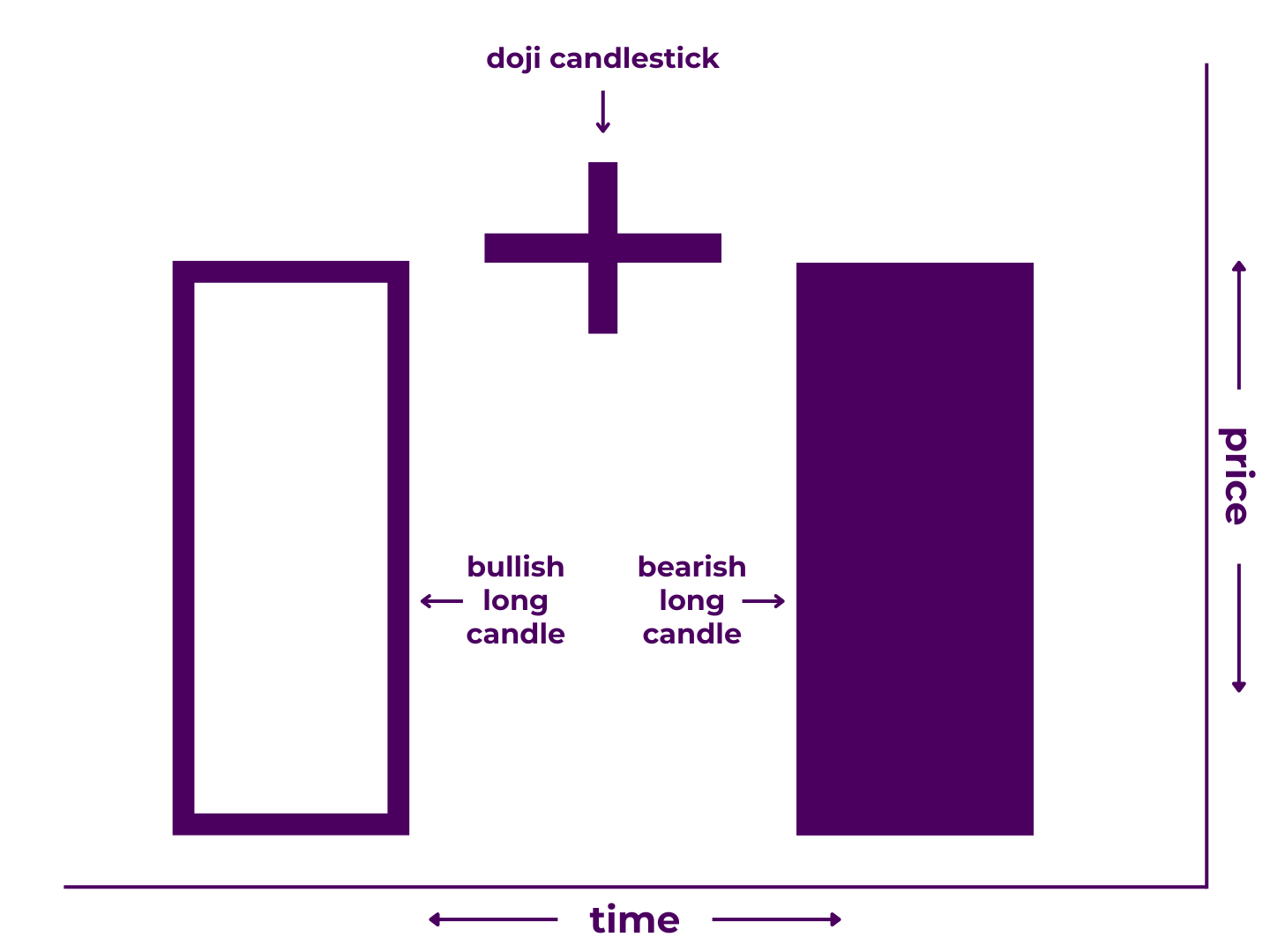
In trading terms:
- During the first period, price continued the pre-existing uptrend.
- During the second period, neither side was able to maintain control.
- During the third period, price moved back down, threatening the uptrend.
Evening doji star patterns show that the bulls attempted to press their advantage on candle one, stalled on candle two, and finally surrendered momentum to the bears on candle three.
Pattern Type: Bearish Reversal
Number of Candlesticks: 3
Looks Like/Narrative Meaning: U-turn or counterpunch
Technical Specifications***
Technically, an evening doji star pattern must:
- Appear during an uptrend
- Begin with a bullish long candle
- Have any doji other than a four-price doji as the second candle
- End with a bearish long candle of similar size to the first candle
- Contain no gaps
In practicality though, many traders will make various exceptions.
- The first and third candles can be different lengths, as long as they are both long line candles and/or test important price levels.
- The second candle doesn’t necessarily have to be a doji, as long as it is a short line candle.
- There can be more than one doji (or short candle) between the first and final candlestick.
***Depending on who you ask, any of these standards may be more or less important. Moreover, some of these variations may be more properly classified as other bearish candlestick patterns.
Related Patterns
- Similar to Bearish Abandoned Baby Pattern
- Similar to Evening Star Pattern
- Subtype of Doji Star Pattern
- Opposite of Morning Star Pattern
For more detail, read our full breakdown on Trading Evening Doji Star Candlestick Patterns.
Bearish Engulfing
A bearish engulfing candlestick pattern is a 2-candlestick formation that may signal a bearish reversal.
It may appear during an uptrend and is made up of a bullish candle and a large bearish candle that opens above and closes below the first, fully containing the trading range of the first.
In trading terms:
- During the first period, price continued the pre-existing uptrend.
- The second period opens with a gap up that is quickly filled as price proceeds to move back down below the opening price of the previous period.
Bearish engulfing candlestick patterns show that the bulls attempted to press their advantage on candle one, continued to do so between candles one and two, but then completely lost the momentum by the end of candle two.
Pattern Type: Bearish Reversal
Number of Candlesticks: 2
Looks Like/Narrative Meaning: dam break or counterpunch
Technical Specifications***
Technically, a bearish engulfing candle pattern must:
- Appear during an uptrend
- Begin with a bullish candle
- End with a bearish long candle
- Have the first candle’s body contained completely within the body of the second
In practicality though, many traders will make various exceptions.
- The first candle can be a neutral candle (ie. a doji), as long as it is fully contained within the body of the second.
- The first candle can move against trend, as long as it is fully contained within the body of the second.
- The second candle doesn’t necessarily have to be a long candle, as long as it fully contains the body and wicks of the first.
- The open of the second candle can be even with the close of the first candle, especially in markets where gaps are less common like cryptocurrency.
***Depending on who you ask, any of these standards may be more or less important. Moreover, some of these variations may be more properly classified as other bearish candlestick patterns.
Related Patterns
- Precursor of Three Outside Down Pattern
- Subtype of Engulfing Candlestick Pattern
- Opposite of Bullish Engulfing Pattern
For more detail, read our full breakdown on Trading Bearish Engulfing Candlestick Patterns.
Bearish Harami
A bearish harami pattern is a 2-candlestick formation that may signal a bearish reversal.
It may appear during an uptrend and is made up of a large bullish candle followed by a small bearish (or neutral) candle. The trading range of the second candle must be completely contained within the body of the first.
In trading terms:
- During the first period, price continued the pre-existing uptrend.
- Before the second period opened, price moved lower, opening within the range of the prior candle body.
- During the second period, price continued to move lower to a modest degree, closing within the range of the prior candle body.
Bearish harami patterns show that the bulls attempted to press their advantage on candle one, lost momentum between candles, and fully stalled out by the close of candle two.
Pattern Type: Bearish Reversal
Number of Candlesticks: 2
Looks Like/Narrative Meaning: birth of a counter-trend or counter-trend incubator
Technical Specifications***
Technically, a bearish harami pattern must:
- Appear during an uptrend
- Begin with a bullish long candle
- End with a bearish short candle
- Have the second candle’s body and wicks contained completely within the body of the first
In practicality though, many traders will make various exceptions.
- The first candle doesn’t have to be a long candle, as long as it is bullish and contains the second candle.
- The second candle doesn’t have to move against trend as long as it is neutral and/or very small (ie. a doji).
- The second candle’s wicks don’t have to be contained within the body of the first, as long as its body is.
- The open of the second candle can be even with the close of the first candle, especially in markets where inside candles are less common like cryptocurrency.
- If additional, consecutive candles after the second candle remain contained within the body of the first candle, all would be included in the harami pattern.
***Depending on who you ask, any of these standards may be more or less important. Moreover, some of these variations may be more properly classified as other bearish candlestick patterns.
Related Patterns
- Similar to Bearish Harami Cross Pattern
- Precursor of Three Inside Down Pattern
- Subtype of Harami Pattern
- Opposite of Bullish Harami Pattern
For more detail, read our full breakdown on Trading Bearish Harami Candlestick Patterns.
Bearish Harami Cross
A bearish harami cross pattern is a 2-candlestick formation that may signal a bearish reversal.
It may appear during an uptrend and is made up of a large bullish candle followed by an inside doji candlestick. The trading range of the second candle must be completely contained within that of the first.
In trading terms:
- During the first period, price continued the pre-existing uptrend.
- Before the second period opened, price moved lower, opening within the range of the prior candle body.
- During the second period, price stayed within the range of the prior candle body and closed at (or very near to) the open.
Bearish harami cross patterns show that the bulls attempted to press their advantage on candle one, lost momentum between candles, and fully stalled out by the close of candle two.
Pattern Type: Bearish Reversal
Number of Candlesticks: 2
Looks Like/Narrative Meaning: birth of a counter-trend or counter-trend incubator
Technical Specifications***
Technically, a bearish harami cross pattern must:
- Appear during an uptrend
- Begin with a bullish long candle
- End with a doji candlestick
- Have the second candle’s body and wicks contained completely within the body of the first
In practicality though, many traders will make various exceptions.
- The first candle doesn’t have to be a long candle, as long as it contains the second candle and moves in the direction of trend.
- The second candle’s wicks don’t have to be contained within the body of the first, as long as the open and close are.
- The open and close of the second candle can be even with the close of the first candle, especially in markets where inside candles are less common like cryptocurrency.
- If additional, consecutive doji after the second candle remain contained within the body of the first candle, all would be included in the harami cross pattern.
***Depending on who you ask, any of these standards may be more or less important. Moreover, some of these variations may be more properly classified as other bearish candlestick patterns.
Related Patterns
- Similar to Bearish Harami Pattern
- Precursor of Three Inside Down Pattern
- Subtype of Harami Cross Pattern
- Opposite of Bullish Harami Cross Pattern
For more detail, read our full breakdown on Trading Bearish Harami Cross Candlestick Patterns.
Bearish In Neck
A bearish in neck pattern is a 2-candlestick formation that may signal a bearish continuation.
It may appear in a downtrend and is made up of a large bearish candle followed by a gap down and smaller bullish candle that fills the gap and closes near the close of the first candle.
In trading terms:
- During the first period, price continued the pre-existing downtrend.
- The second period opened with a modest gap down but price moved back up, filled the gap, and closed at the same price as the first period.
Bearish in neck patterns show that the bears attempted to press their advantage on candle one and between candles one and two, but then allowed some reprieve by the end of candle two.
Pattern Type: Bearish Continuation
Number of Candlesticks: 2
Looks Like/Narrative Meaning: a pause in the action or rallying point
Technical Specifications***
Technically, a bearish in neck pattern must:
- Appear during a downtrend
- Begin with a bearish long candle
- Have a gap down after the first candle
- End with a bullish candle that fills the gap and closes even with the bottom of the first candle’s body
In practicality though, many traders will make various exceptions.
- The first candle doesn’t necessarily have to be a long candle, as long as its body is longer than the body of the second candle.
- The close of the second candle can be slightly above or below the close of the first candle.
- It can take two candles to fill the gap, as long as the combined body length of the second and third candles is shorter than the length of the first.
***Depending on who you ask, any of these standards may be more or less important. Moreover, some of these variations may be more properly classified as other bearish candlestick patterns.
Related Patterns
- Similar to Bearish Counterattack Lines Pattern
- Similar to Bearsih On Neck Pattern
- Subtype of In Neck Pattern
- Opposite of Bullish In Neck Pattern
For more detail, read our full breakdown on Trading Bearish In Neck Candlestick Patterns.
Bearish Mat Hold
A bearish mat hold pattern is a 5-candlestick formation that may signal a bearish continuation.
It may appear in a downtrend and is made up of a large bearish candlestick followed by a gap down and three smaller bullish (or neutral) candles that fill the gap but never close above the first candle’s open, then another large bearish candle that closes below all previous candles.
In trading terms:
- During the first period, price continued the pre-existing downtrend.
- The second period opened with a gap down that was filled over the course of the next three periods as price moved back up but never closed higher than the first period’s open.
- During the fifth period, price resumed downward movement and closed lower than any of the preceding four periods.
Bearish mat hold patterns show that the bears attempted to press their advantage on candle one (and between candles one and two), stalled for the next three candles, before finally regaining control and pressing trend further by the end of the fifth candle.
Pattern Type: Bearish Continuation
Number of Candlesticks: 5
Looks Like/Narrative Meaning: a one-sided beatdown or near-knockout blow
Technical Specifications***
Technically, a bearish mat hold pattern must:
- Appear during a downtrend
- Begin with a bearish long candle
- Have a gap down after the first candle that gets filled over the course of the next three candles
- Have three consecutive bullish (or neutral) short candlesticks after the first candlestick that never close above the open of the first candlestick
- End with another bearish long candlestick that closes below the body and wicks of all preceding candlesticks in the pattern
In practicality though, many traders will make various exceptions.
- The first candle doesn’t necessarily have to be a long candle, as long as its body is longer than candles two, three, and four.
- The middle three candles don’t necessarily have to be short candles, as long as all of them are shorter than candle one.
- One or more of the middle candles can be bearish, as long as the gap gets filled before the fifth candle begins.
- There can be more than three candles between the first and last candles, as long as the gap gets filled and none of the middle candles close outside the body of the first.
- The gap can go, especially in markets where gaps are less common, like cryptocurrency.
- The final candle doesn’t necessarily have to close below all of the wicks of the prior candles, as long it closes below their bodies.
***Depending on who you ask, any of these standards may be more or less important. Moreover, some of these variations may be more properly classified as other bearish candlestick patterns.
Related Patterns
- Similar to Falling Three Methods Pattern
- Subtype of Mat Hold Pattern
- Opposite of Bullish Mat Hold Pattern
For more detail, read our full breakdown on Trading Bearish Mat Hold Candlestick Patterns.
Bearish On Neck
A bearish on neck pattern is a 2-candlestick formation that may signal a bearish continuation.
It may appear in a downtrend and is made up of a large bearish candle followed by a gap down and a smaller bullish candle that partially fills the gap and closes near the low of the previous candle.
In trading terms:
- During the first period, price continued the pre-existing downtrend.
- The second period opened with a gap down below the first period’s low, then moved back up, partially filled the gap, and closed at the same price as the first period’s low.
Bearish on neck patterns show that the bears attempted to press their advantage on candle one and between candles one and two, then held their ground fairly well over the course of candle two.
Pattern Type: Bearish Continuation
Number of Candlesticks: 2
Looks Like/Narrative Meaning: “no man’s land” or a mustering line
Technical Specifications***
Technically, a bearish on neck pattern must:
- Appear during a downtrend
- Begin with a bearish long candle that has a lower wick, such as a bearish belt hold.
- Have a gap down after the first candle that exceeds the lower wick of the first candle
- End with a bullish candle that partially fills the gap and closes even with the lower wick of the first candle
In practicality though, many traders will make various exceptions.
- The first candle doesn’t necessarily have to be a long candle, as long as its body is longer than the body of the second candle.
- The first candle doesn’t necessarily have to have a lower wick, as long as there is a gap that is only partially filled by the next candle.
- The close of the second candle candle be slightly above or below the lower wick of the first candle, as long as it does not get too near the close of the first candle.
- It can take two candles to reach the lower wick of the first candle, as long as the combined body length of the second and third candles is shorter than the body of the first candle.
***Depending on who you ask, any of these standards may be more or less important. Moreover, some of these variations may be more properly classified as other bearish candlestick patterns.
Related Patterns
- Similar to Bearish Counterattack Lines Pattern
- Similar to Bearish In Neck Pattern
- Subtype of On Neck Pattern
- Opposite of Bullish On Neck Pattern
For more detail, read our full breakdown on Trading Bearish On Neck Candlestick Patterns.
Evening Star
An evening star pattern is a 3-candlestick formation that may signal a bearish reversal.
It may appear during an uptrend and is made up of a large bullish candle followed by a short candle and a large bearish candle.
In trading terms:
- During the first period, price continued the pre-existing uptrend.
- During the second period, neither side was able to gain much ground.
- During the third period, price moved back down, threatening the uptrend.
Evening star patterns show that the bulls attempted to press their advantage on candle one, stalled on candle two, and finally surrendered momentum to the bears on candle three.
Pattern Type: Bearish Reversal
Number of Candlesticks: 3
Looks Like/Narrative Meaning: U-turn or counterpunch
Technical Specifications***
Technically, an evening star pattern must:
- Appear during an uptrend
- Begin with a bullish long candle
- Have a short candle as the second candle
- End with a bearish long candle of similar size to the first candle
- Contain no gaps
In practicality though, many traders will make various exceptions.
- The first and third candles can be different lengths, as long as they are both long line candles and/or test important price levels.
- There can be more than one short candle between the first and final candlestick.
- There can be one or more gaps, as long as the overall structure remains the same.
***Depending on who you ask, any of these standards may be more or less important. Moreover, some of these variations may be more properly classified as other bearish candlestick patterns.
Related Patterns
- Similar to Bearish Abandoned Baby Pattern
- Similar to Evening Doji Star Pattern
- Subtype of Star Pattern
- Opposite of Morning Star Pattern
For more detail, read our full breakdown on Trading Evening Star Candlestick Patterns.
Downside Tasuki Gap
A downside tasuki gap pattern is a 3-candlestick formation that may signal a bearish continuation.
It may appear during a downtrend and is made up of a large bearish candle, a gap down, and another large bearish candle, followed by a bullish candle that partially closes the gap between the first two.
In trading terms:
- During the first period, price continued the pre-existing downtrend.
- The second period opened with a gap down and continued driving downward.
- During the third period, price moved back up and closed somewhere in the middle of the gap.
Downside tasuki gap patterns show that the bears pressed their advantage on candle one, continued between candles one and two, continued further through the end of candle two, until finally suffering a relatively minor setback on candle three.
Pattern Type: Bearish Continuation
Number of Candlesticks: 3
Looks Like/Narrative Meaning: a momentary respite or an attempted counterattack
Technical Specifications***
Technically, a downside tasuki gap pattern must:
- Appear during a downtrend
- Begin with a bearish long candle
- Have a gap down after the first candle
- Have another bearish long candle after the gap
- End with a bullish long candle that partially fills the gap
In practicality though, many traders will make various exceptions.
- The first candle doesn’t necessarily have to be a long candle, as long as it is a candlestick that gives a strong bearish bias (such as a gravestone doji).
- The second candle doesn’t necessarily have to be a long candle, as long as it is bearish and does not fill the gap.
- The third candle doesn’t necessarily have to be a long candle, as long as it doesn’t fully fill the gap.
- The third candle doesn’t have to fill the gap at all, as long as it moves against trend.
- It can take multiple bullish candles to reach the gap, as long as all other criteria are met and the gap remains partially unfilled.
***Depending on who you ask, any of these standards may be more or less important. Moreover, some of these variations may be more properly classified as other bearish candlestick patterns.
Related Patterns
- Extension of Falling Window Pattern
- Subtype of Tasuki Gap Pattern
- Opposite of Upside Tasuki Gap Pattern
For more detail, read our full breakdown on Trading Downside Tasuki Gap Candlestick Patterns.
Three Inside Down
A three inside down pattern is a 3-candlestick formation that may signal a reversal.
It may appear during an uptrend and is made up of a large bullish candle followed by a shorter bearish (or neutral) inside candle and another bearish candle that closes below the open of the first candle.
In trading terms:
- During the first period, price continued the pre-existing uptrend.
- Before the second period opened, price moved lower, opening within the range of the prior candle body.
- During the second period, price moved lower to a modest degree, closing within the range of the prior candle body.
- During the third period, price continued moving lower, this time closing below the open of the first period.
Three inside down patterns show that the bulls attempted to press their advantage on candle one, suffered immediate pushback between candles one and two, and completely surrendered momentum over the course of candles two and three.
Pattern Type: Bearish Reversal
Number of Candlesticks: 3
Looks Like/Narrative Meaning: U-turn or counterpunch
Technical Specifications***
Technically, a three inside down pattern must:
- Appear during an uptrend
- Begin with a bullish long candle
- Have a bearish inside candle as the second candle
- End with a bearish candle that closes below the first candle’s open
In practicality though, many traders will make various exceptions.
- The first candle doesn’t necessarily have to be a long candle, as long as the second candle is a bearish inside candlestick.
- The second candle can be bullish, as long as it is an inside candle.
- The second candle’s wicks don’t necessarily have to be contained within the body of the first, as long as its body is.
- The open of the second candle can be even with the close of the first candle, especially in markets where inside candles are less common, like cryptocurrency.
- There can be more than one inside candle between the first and final candles, as long as the final candle closes below the first candle’s open.
***Depending on who you ask, any of these standards may be more or less important. Moreover, some of these variations may be more properly classified as other bearish candlestick patterns.
Related Patterns
- Extension of Bearish Harami
- Extension of Bearish Harami Cross
- Subtype of Three Inside Pattern
- Opposite of Three Inside Up Pattern
For more detail, read our full breakdown on Trading Three Inside Down Candlestick Patterns.
Falling Three Methods
A falling three methods pattern is a 5-candlestick formation that may signal a bearish continuation.
It may appear in a downtrend and is made up of a large bearish candlestick, three smaller bullish (or neutral) candles that never close above the first candle’s open, then another large bearish candle that closes below all previous candles.
In trading terms:
- During the first period, price continued the pre-existing downtrend.
- During the next three periods, price moved up but never closed higher than the first period’s open.
- During the fifth period, price resumed downward movement, and closed lower than any of the preceding four periods.
Falling three methods patterns show that the bears attempted to press their advantage on candle one, stalled for the next three candles, before finally regaining control and pressing trend further by the end of the fifth candle.
Pattern Type: Bearish Continuation
Number of Candlesticks: 5
Looks Like/Narrative Meaning: one-sided beatdown or near-knockout blow
Technical Specifications***
Technically, a falling three methods pattern must:
- Appear during a downtrend
- Begin with a bearish long candle
- Have three consecutive bullish (or neutral) short candlesticks after the first candlestick that never close above the open of the first candlestick
- End with another bearish long candlestick that closes below the body and wicks of all preceding candlesticks in the pattern
In practicality though, many traders will make various exceptions.
- The first candle doesn’t necessarily have to be a long candle, as long as its body is longer than candles two, three, and four.
- The middle three candles don’t necessarily have to be short candles, as long as all of them are shorter than candle one.
- One or more of the middle candles can be bearish, as long as all of them close within the range of candle one.
- There can be more than three candles between the first and last candles, as long as none of the middle candles close outside the body of the first.
- The final candle doesn’t necessarily have to close below all of the wicks of the prior candles, as long it closes below their bodies.
***Depending on who you ask, any of these standards may be more or less important. Moreover, some of these variations may be more properly classified as other bearish candlestick patterns.
Related Patterns
- Similar to Bearish Mat Hold Pattern
- Subtype of Three Methods Pattern
- Opposite of Rising Three Methods Pattern
For more detail, read our full breakdown on Trading Falling Three Methods Candlestick Patterns.
Three Outside Down
A three outside down pattern is a 3-candlestick formation that may signal a bearish reversal.
It may appear during an uptrend and is made up of a bullish candle followed by a large bearish engulfing candlestick and another bearish candle after that.
In trading terms:
- During the first period, price continued the pre-existing uptrend.
- Before the second period opened, price continued moving higher, creating a gap up open.
- During the second period, price moved dramatically lower, closing below the open of the first period.
- During the third period, price continued the downward movement of the period before.
Three outside down patterns show that the bulls attempted to press their advantage on candle one, continued to do so between candles one and two, but were completely upended by the end of candle two, and lost even more ground on candle three.
Pattern Type: Bearish Reversal
Number of Candlesticks: 3
Looks Like/Narrative Meaning: complete turnaround or devastating counterstrike
Technical Specifications***
Technically, a three outside down pattern must:
- Appear during an uptrend
- Begin with a (non-short) bullish candle
- Gap up to open the second candle
- Have a bearish long candle as the second candle that fully contains the first
- End with another bearish candle
In practicality though, many traders will make various exceptions.
- The first candle can be a short or neutral (ie. a doji), as long as it is fully contained within the body of the second.
- The first candle can be bearish, as long as it is fully contained within the body of the second.
- The second candle doesn’t necessarily have to be a long candle, as long as it fully contains the body and wicks of the first.
- The open of the second candle can be even with the close of the first candle, especially in markets where gaps are less common like cryptocurrency.
***Depending on who you ask, any of these standards may be more or less important. Moreover, some of these variations may be more properly classified as other bearish candlestick patterns.
Related Patterns
- Extension of Bearish Engulfing Candlestick Pattern
- Subtype of Three Outside Pattern
- Opposite of Three Outside Up Pattern
For more detail, read our full breakdown on Trading Three Outside Down Candlestick Patterns.
Tweezer Top
A tweezer top pattern is a 2-candlestick formation that may signal a bearish reversal.
It may appear during an uptrend and is made up of a large bullish candlestick followed by a large bearish candlestick where the top of the bodies and wicks of each candle match each other.
In trading terms:
- During the first period, price continued the pre-existing uptrend before pulling back below the high.
- During the second period, price moved back up until it reached the prior period’s high then fell back down near the open of the first period.
Tweezer top patterns show that the bulls attempted to press their advantage on candle one but surrendered the momentum over the course of candle two.
Pattern Type: Bearish Reversal
Number of Candlesticks: 2
Looks Like/Narrative Meaning: an about-face or price action 180
Technical Specifications***
Technically, a tweezer top pattern must:
- Appear during an uptrend
- Begin with a bullish long candle that has an upper wick, such as a bullish belt hold
- End with a bearish long candle that has an upper wick of approximately the same length as the first
In practicality though, many traders will make various exceptions.
- The second candle doesn’t necessarily have to be a long candle, as long as the wicks of both candles are even.
- The wicks of the two candles don’t necessarily have to match exactly, as long as both candles are long candles in which the open of the second matches the close of the first.
- The candles don’t necessarily have to have wicks, as long as the candle bodies are nearly identical in size.
***Depending on who you ask, any of these standards may be more or less important. Moreover, some of these variations may be more properly classified as other bearish candlestick patterns.
Related Patterns
- Subtype of Tweezers Pattern
- Opposite of Tweezer Bottom Pattern
For more detail, read our full breakdown on Trading Tweezer Top Candlestick Patterns.
Falling Window
A falling window pattern is a 2-candlestick formation that may signal a bearish continuation.
It may appear during a downtrend and is made up of two large bearish candles with a gap between them.
In trading terms:
- During the first period, price continued the pre-existing downtrend.
- The second period opened with a gap down and continued driving downward.
Falling window patterns show that the bears pressed their advantage on candle one, continued between candles one and two, and continued further through the end of candle two.
Pattern Type: Bearish Continuation
Number of Candlesticks: 2
Looks Like/Narrative Meaning: a runaway train or uncontested offensive
Technical Specifications***
Technically, a falling window pattern must:
- Appear during a downtrend
- Begin with a bearish long candle
- Have a gap down after the first candle
- End with another bearish long candle
In practicality though, many traders will make various exceptions.
- The first candle doesn’t necessarily have to be a long candle, as long as it is a candlestick that gives a strong bearish bias (such as a gravestone doji).
- The second candle doesn’t necessarily have to be a long candle, as long as it is bearish and does not fill the gap.
***Depending on who you ask, any of these standards may be more or less important. Moreover, some of these variations may be more properly classified as other bearish candlestick patterns.
Related Patterns
- Precursor of Falling Tasuki Gap Pattern
- Subtype of Window Pattern
- Opposite of Rising Window Pattern
For more detail, read our full breakdown on Trading Falling Window Candlestick Patterns.
Takeaways
As you can see, there are many different bearish candlestick patterns.
Luckily, you don’t memorize them all to become a successful trader. Learning the principles of price action and technical analysis are far more important. However, studying candlestick patterns is one of the best ways to do so.
In the end, understanding candlestick patterns is but one piece of the trading puzzle. You’ll need more tools in your belt to understand the story of the charts. Still, by learning the different types of candlestick patterns, you’re one step closer to creating a complete trading strategy.
Know of an important candlestick pattern we missed? Have some special insight into trading a specific pattern? Contribute to the conversation in the comments below! Or, share this post with a trader it might help. And if you haven’t already, check out our Candlestick Patterns Guide to learn the best ways to trade candlestick patterns.

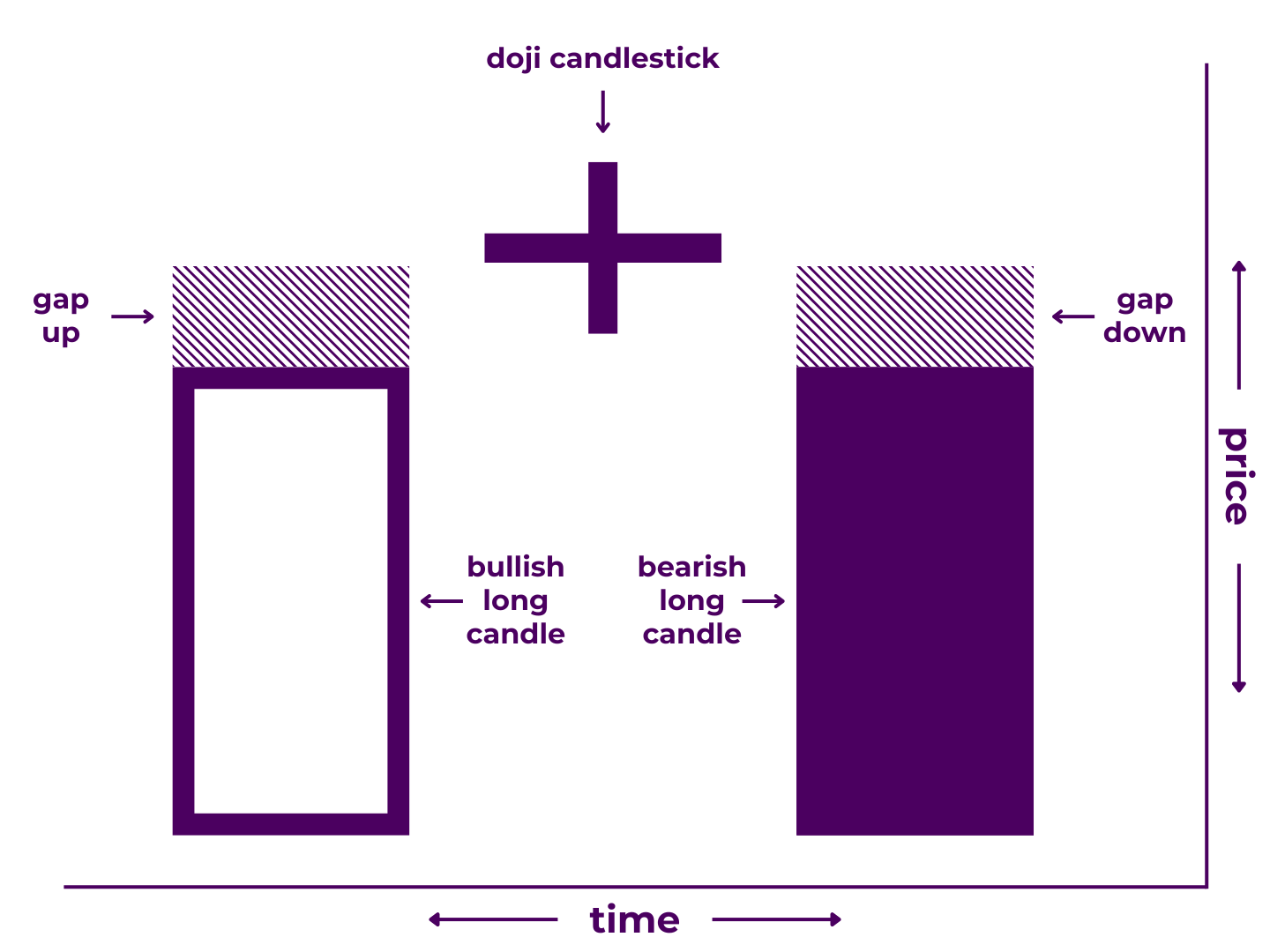
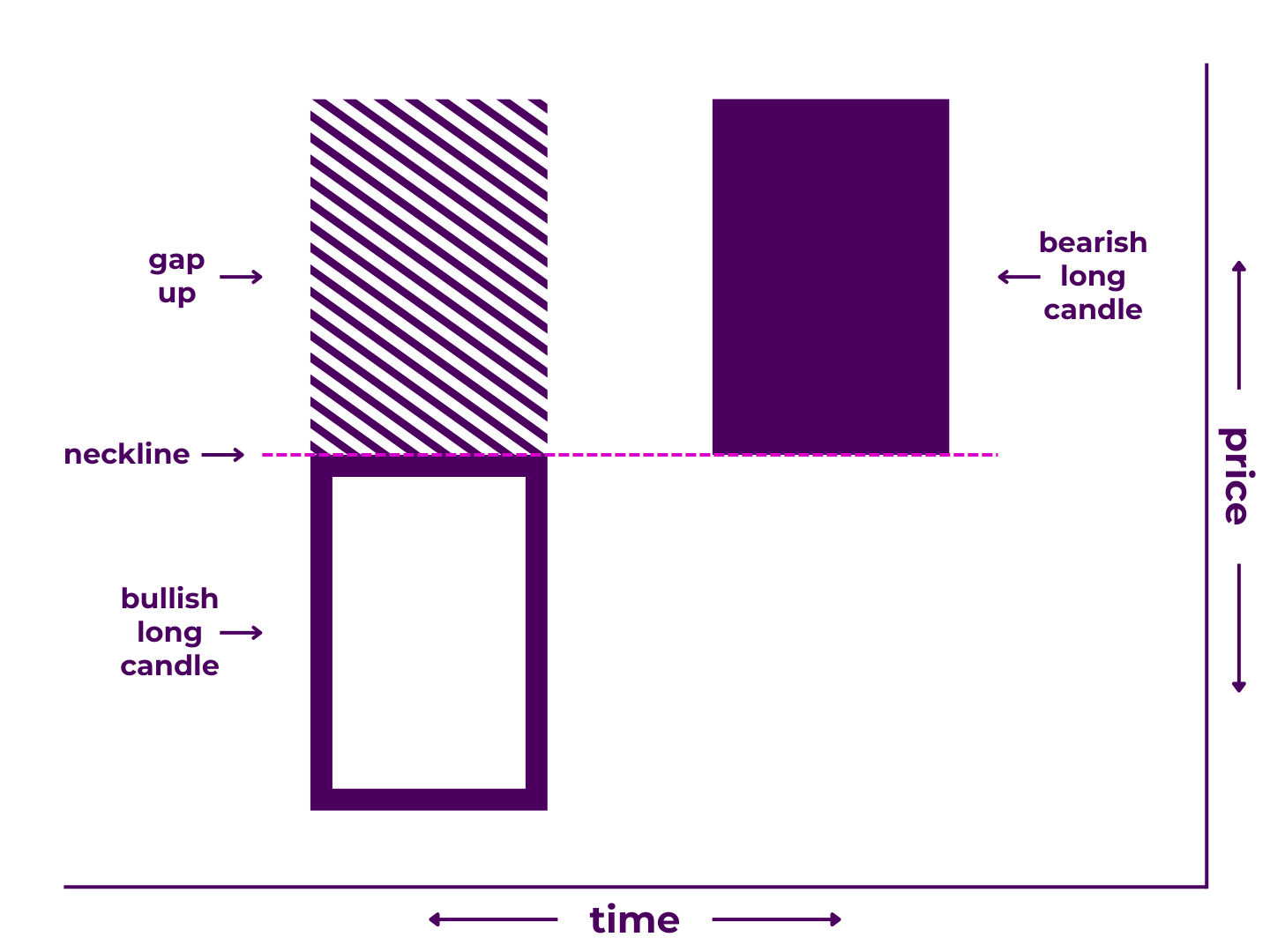
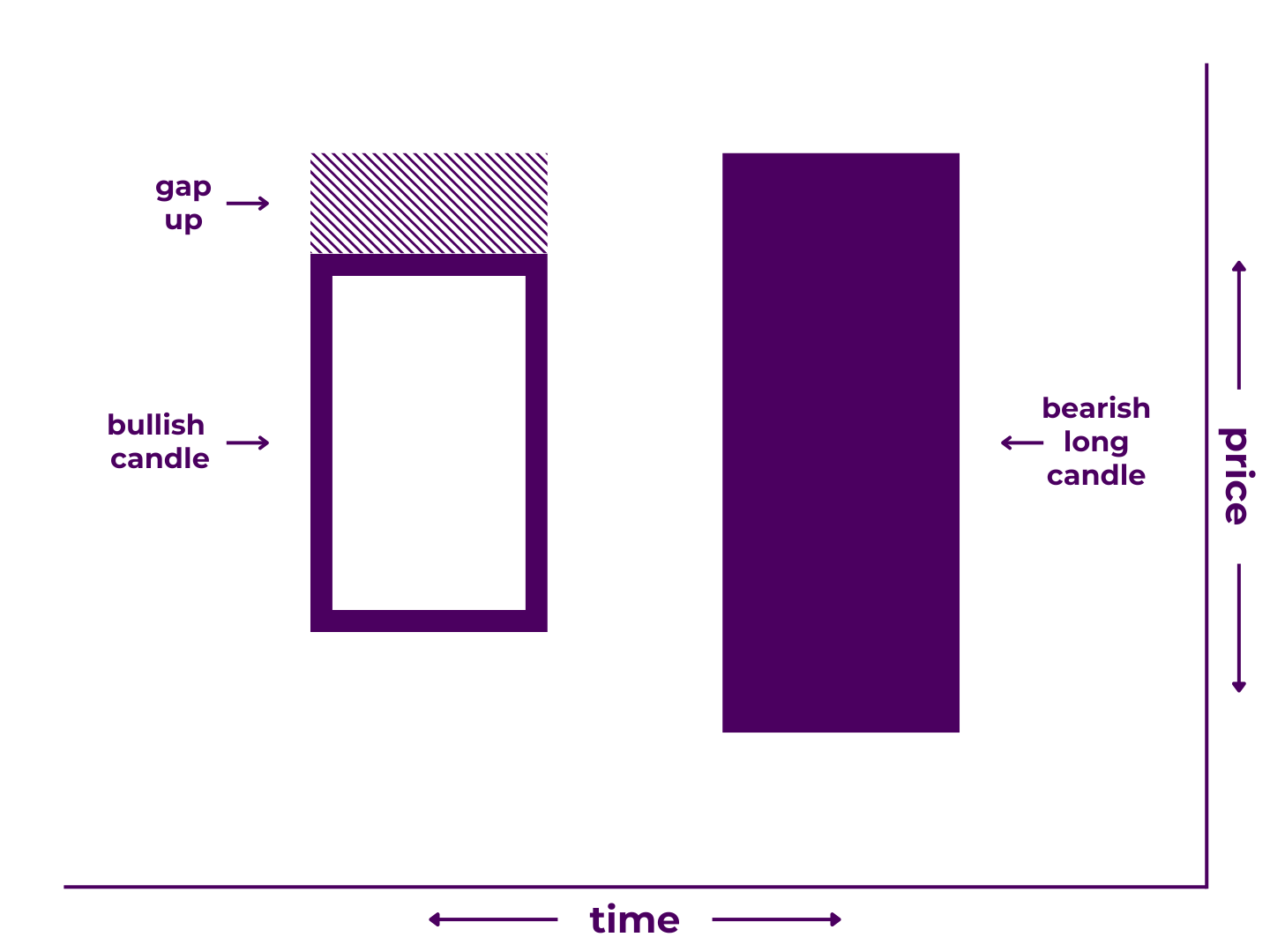
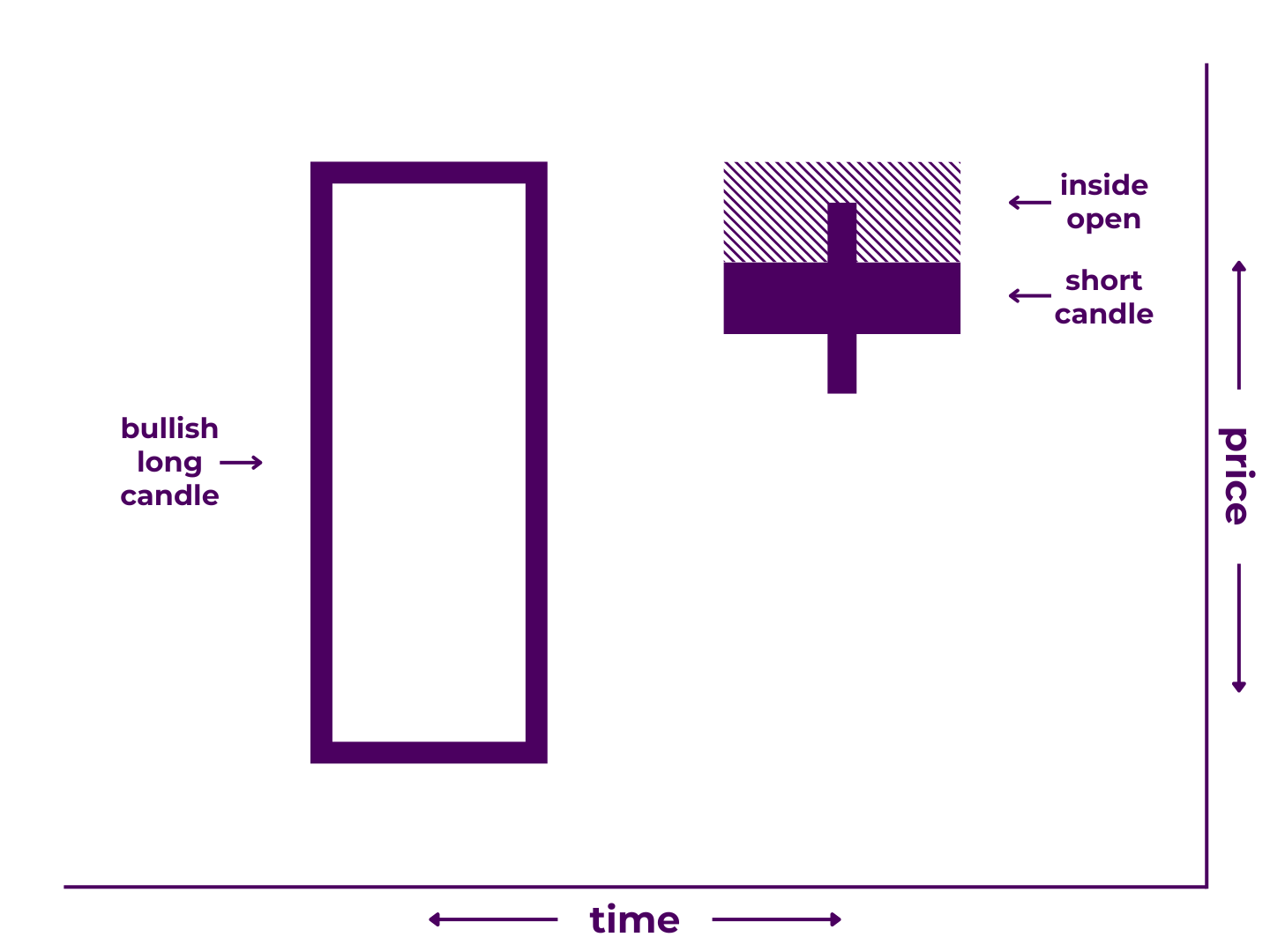
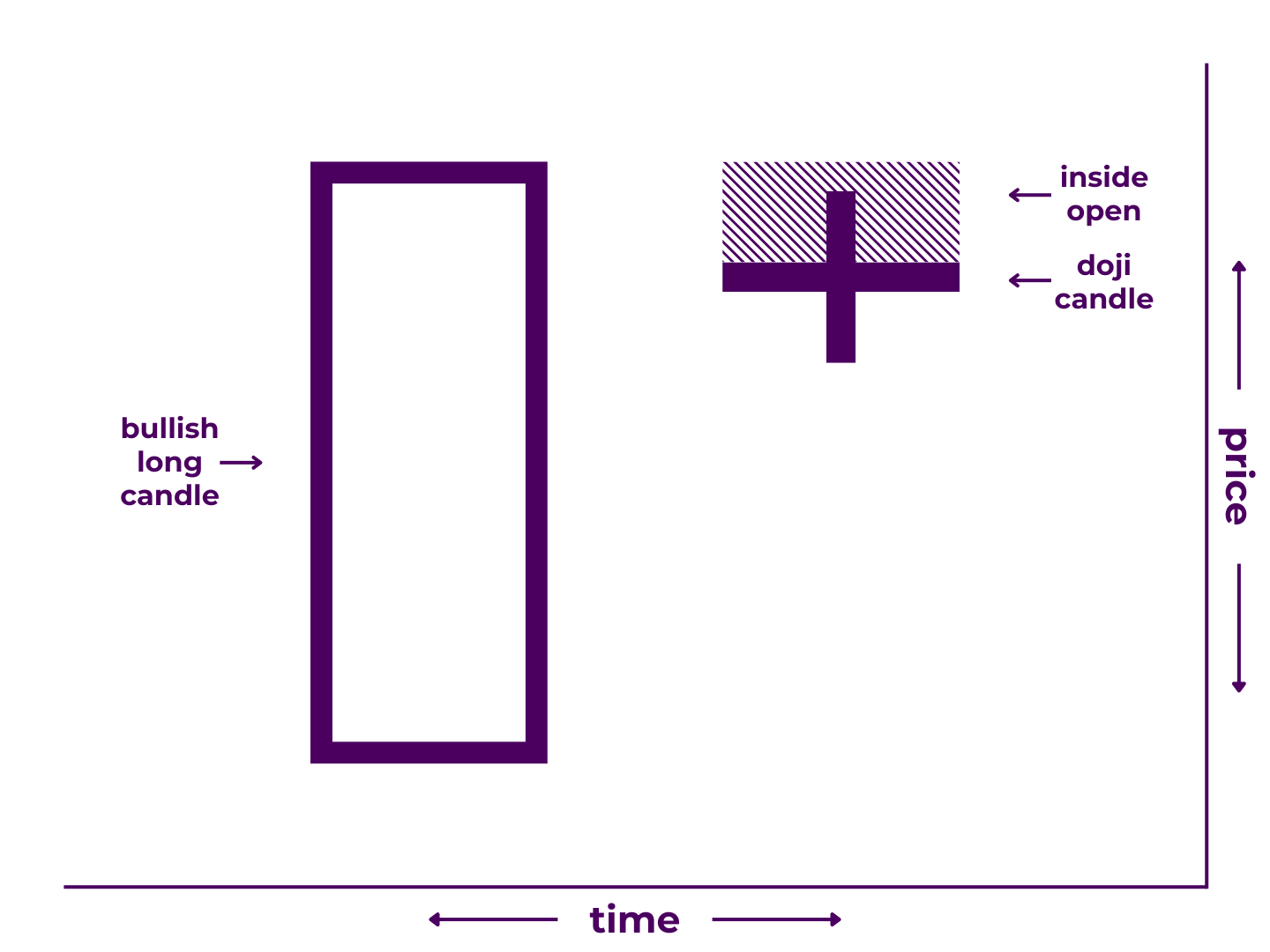
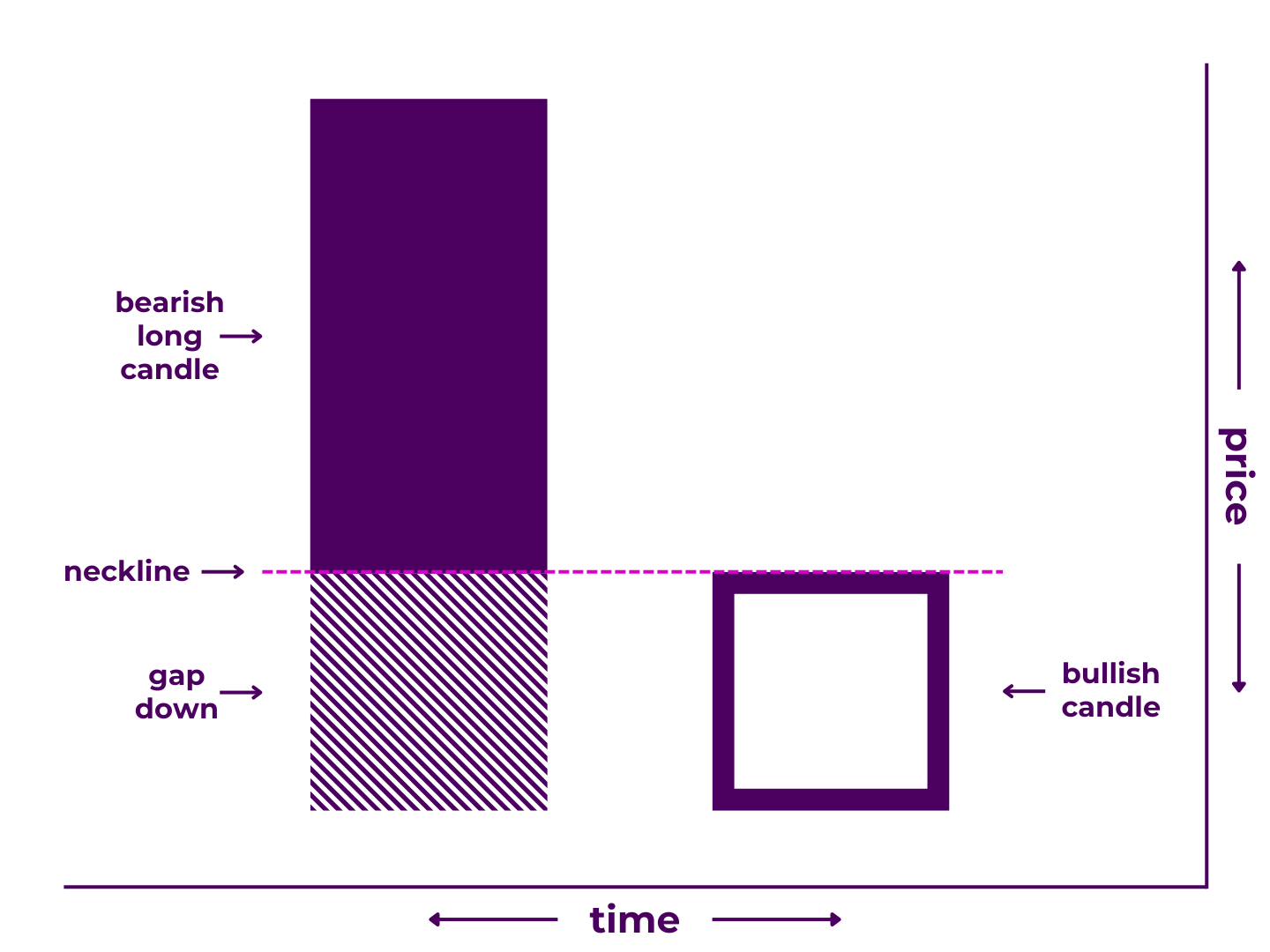
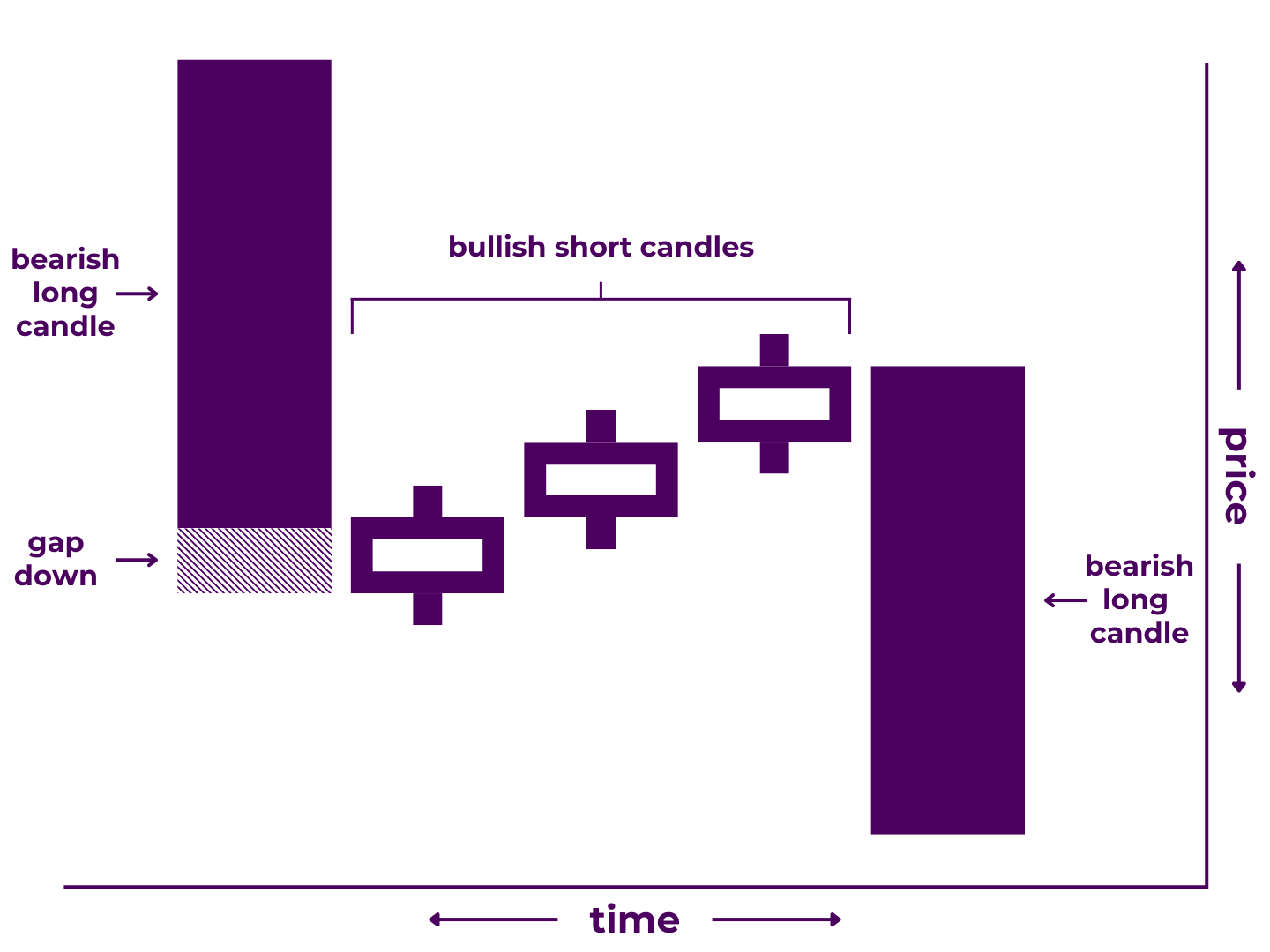
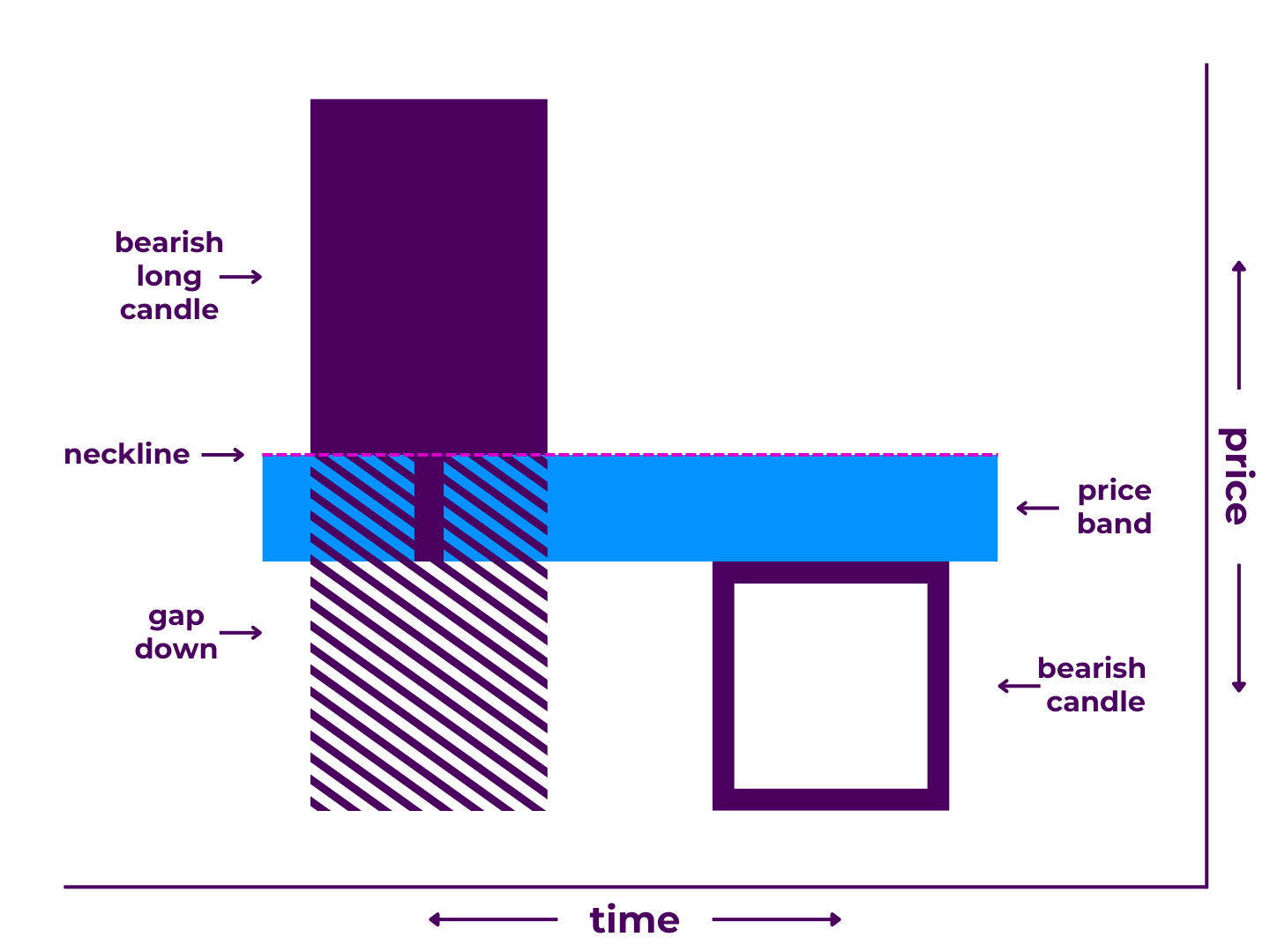
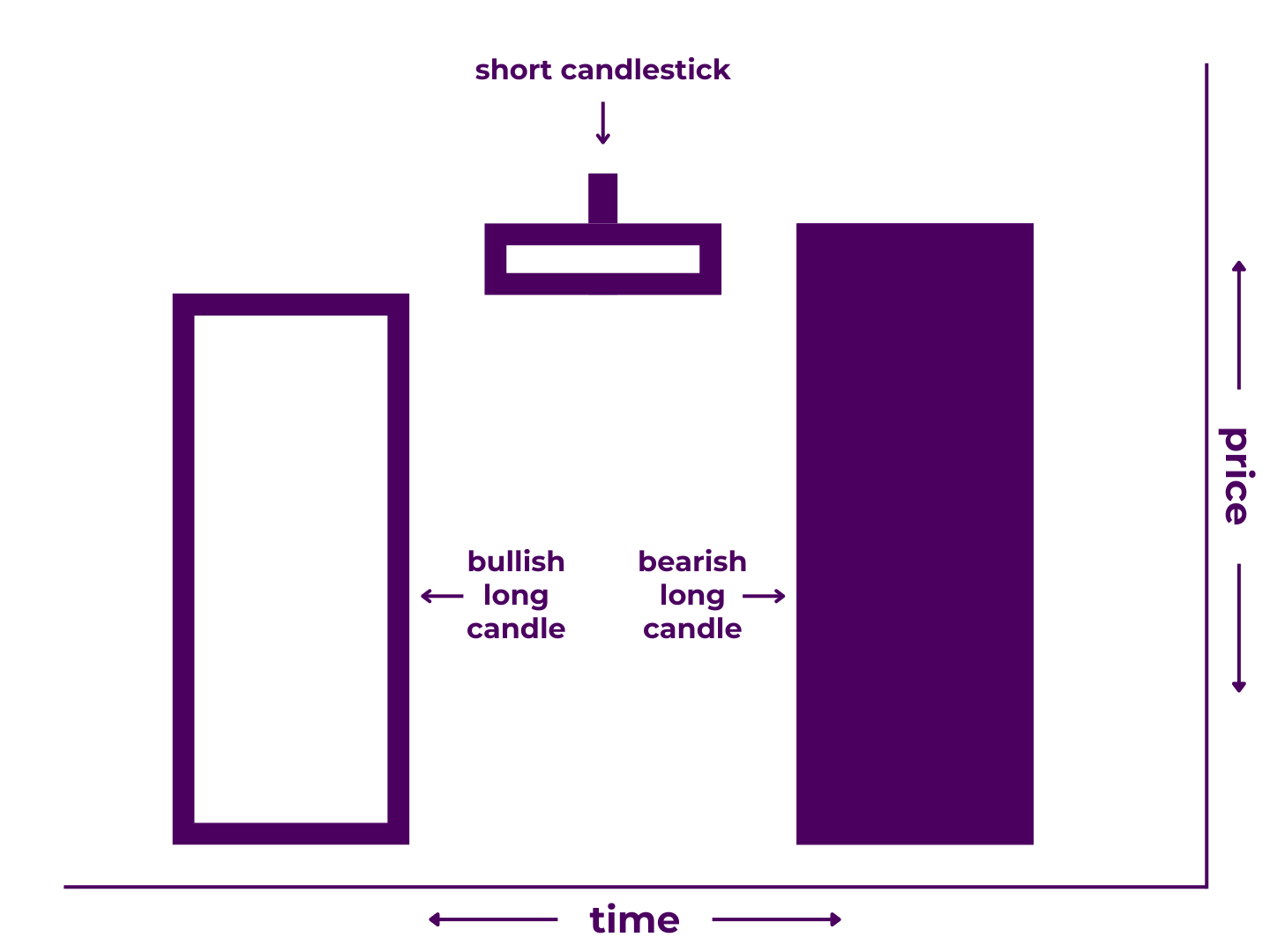
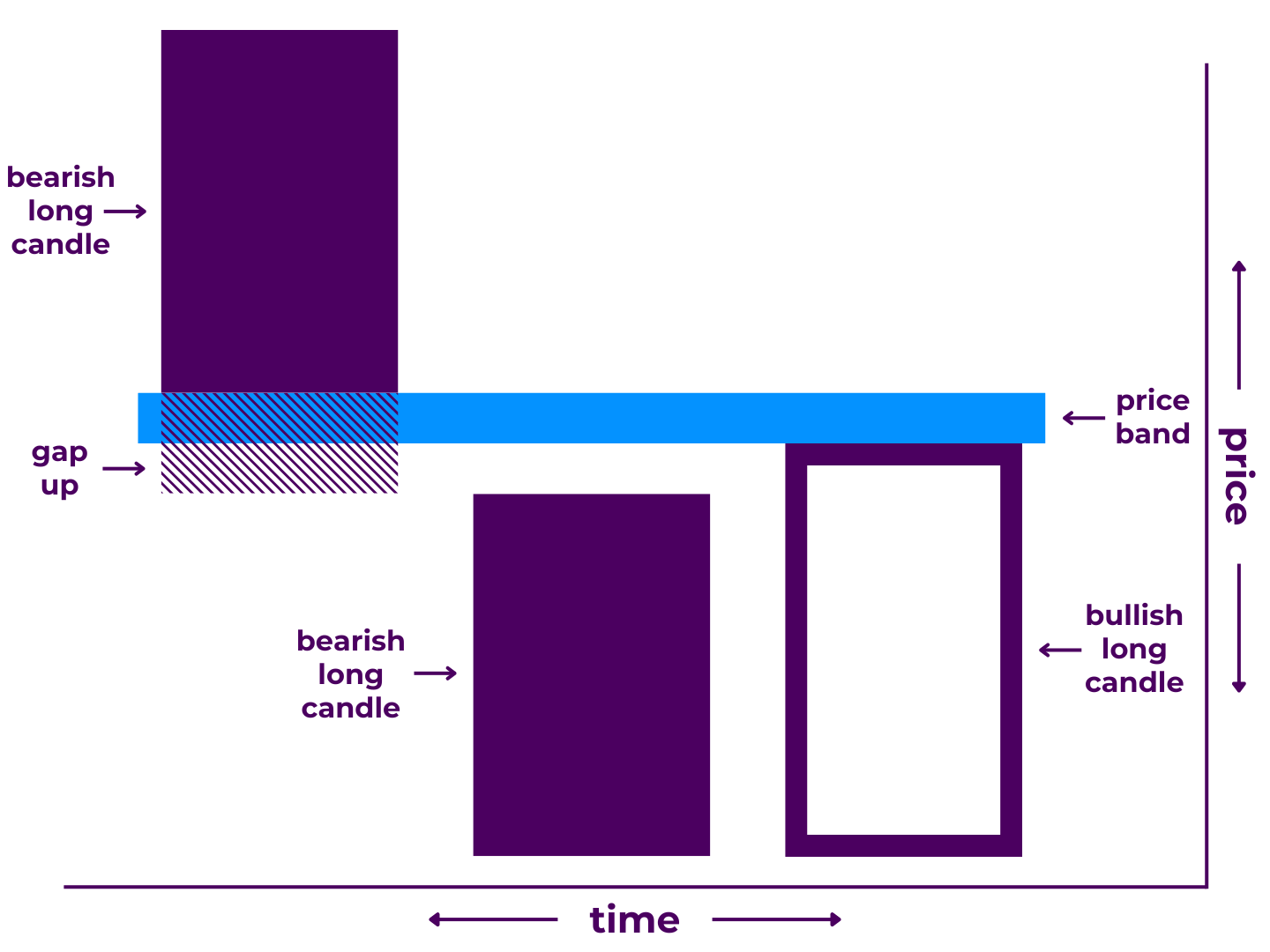
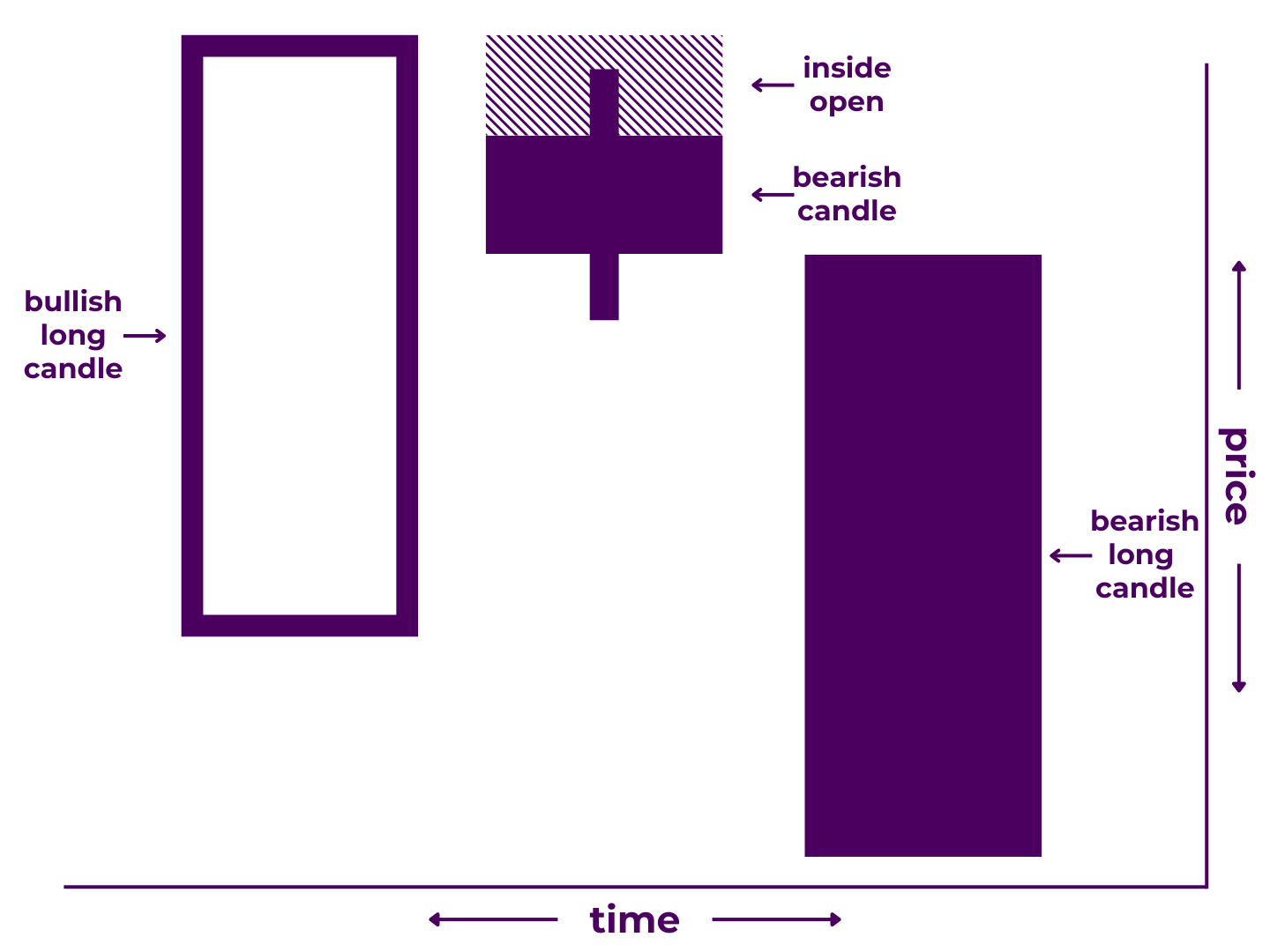
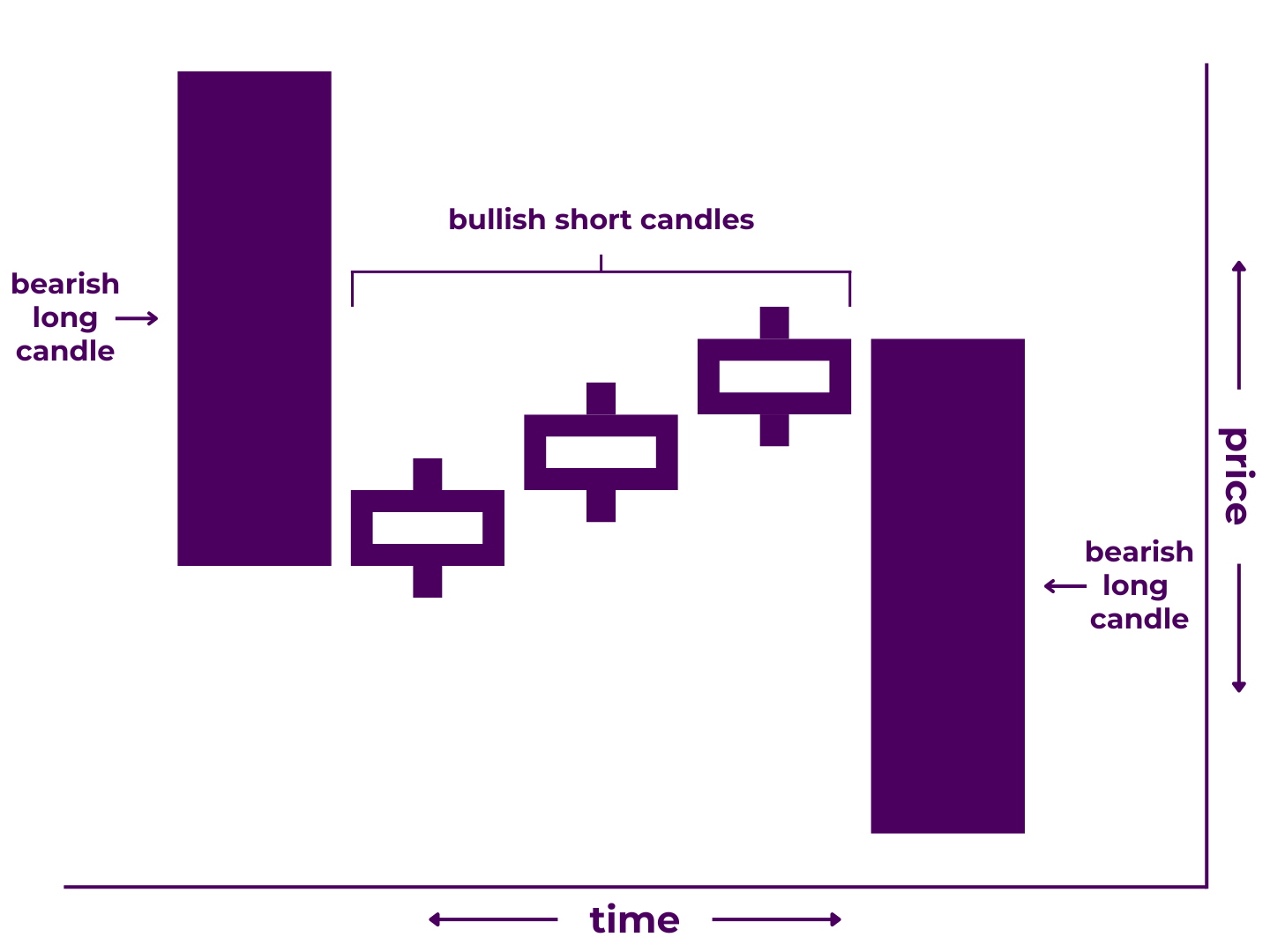
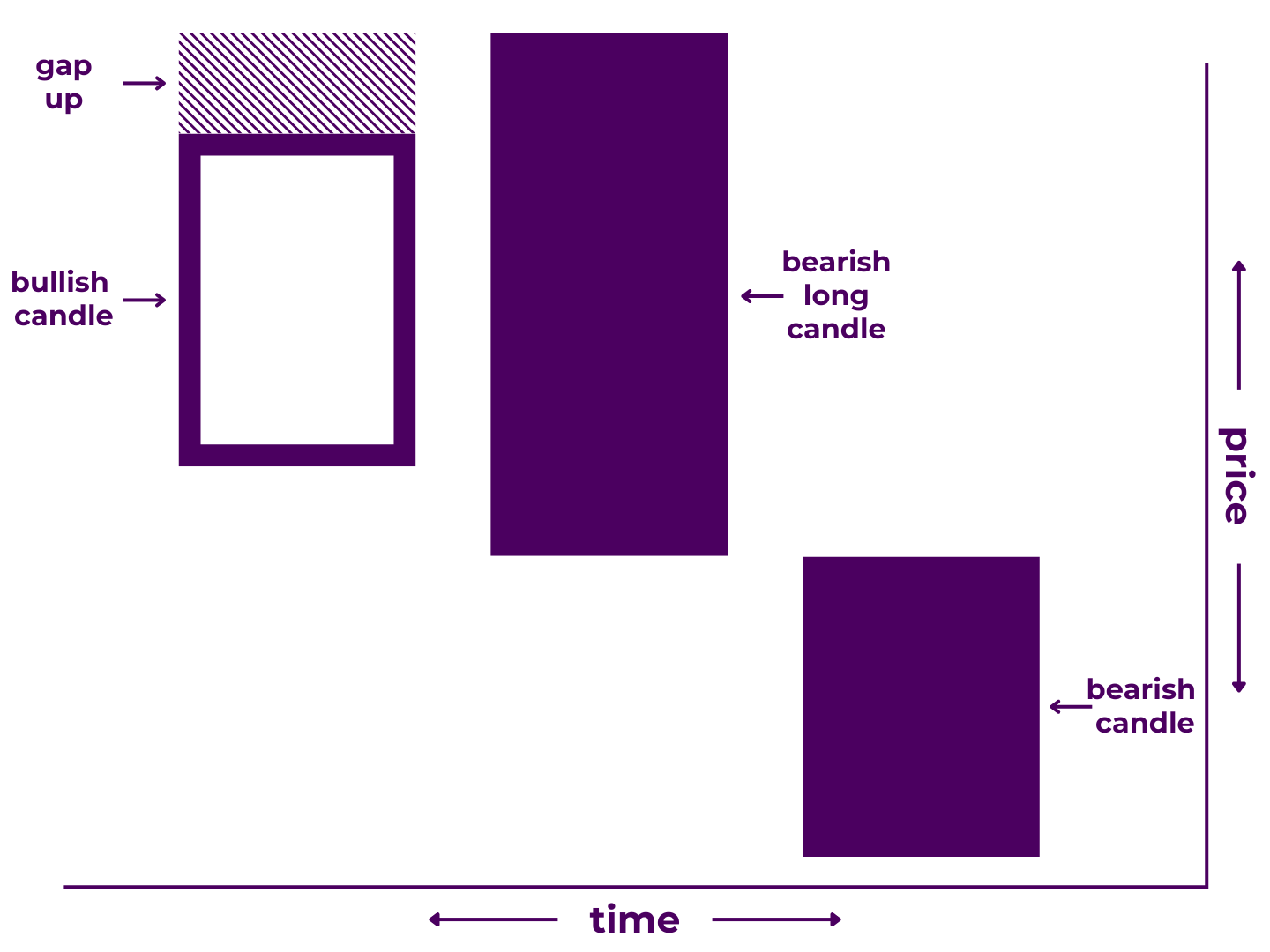
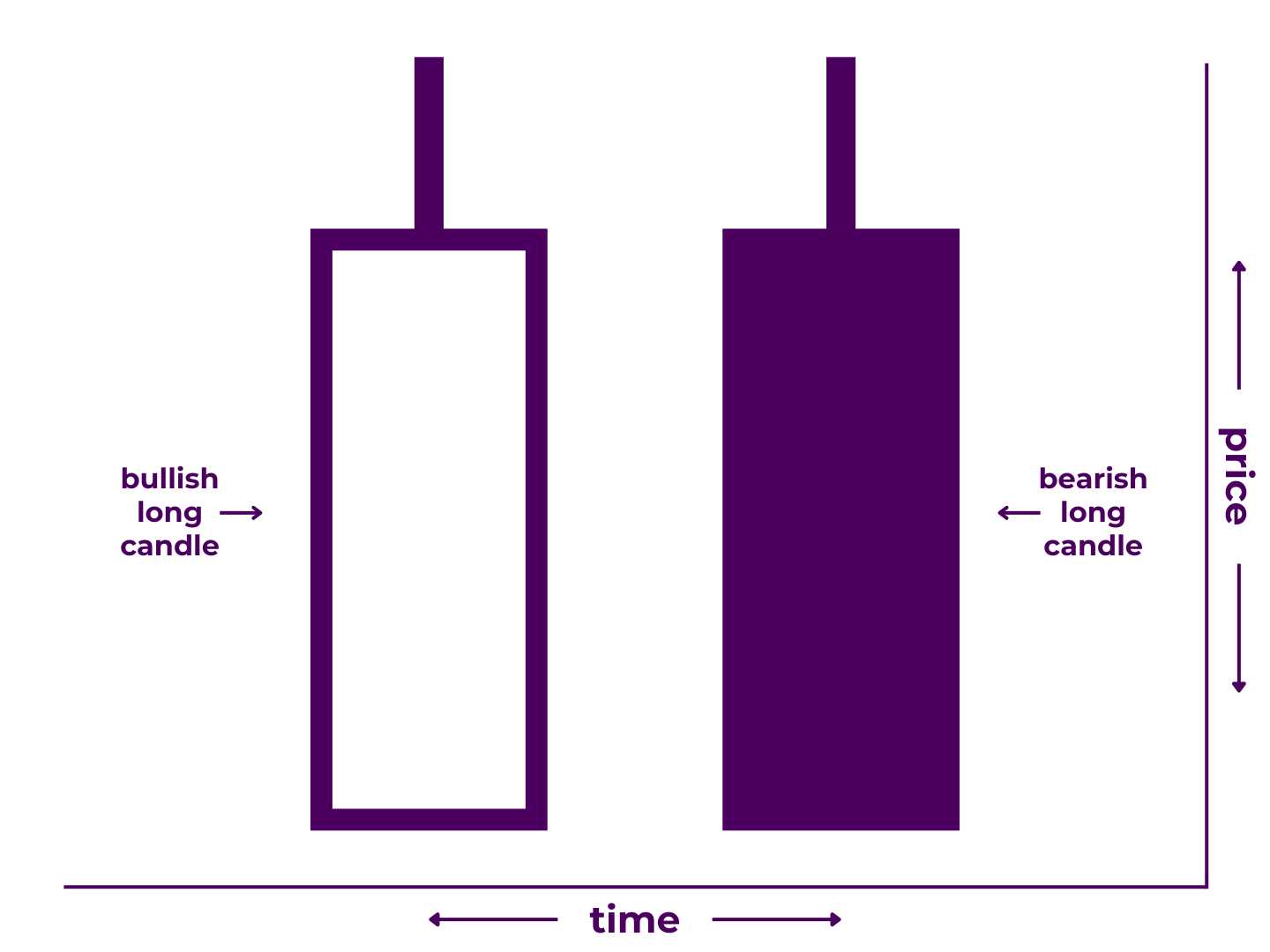
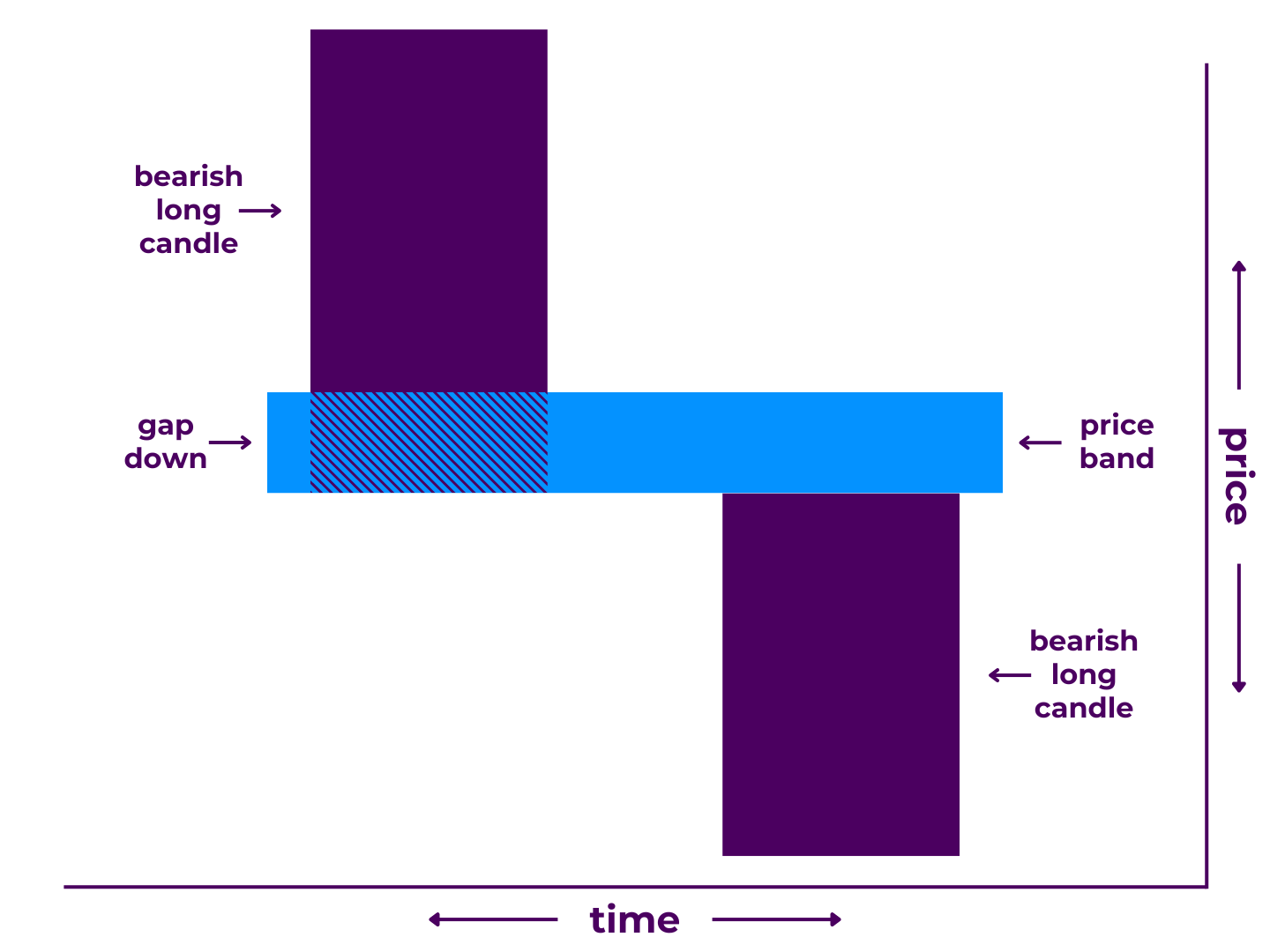
0 Comments